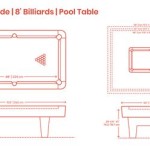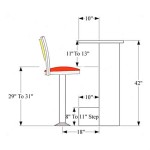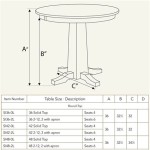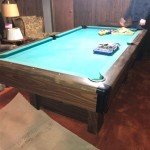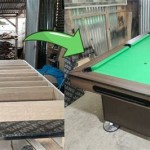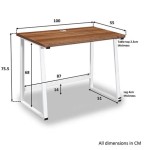The Enduring Appeal of the Farmhouse Dining Room Table: A Focus on Round Designs
The farmhouse aesthetic, with its emphasis on natural materials, rustic charm, and a sense of warmth and community, has become a dominant force in interior design. At the heart of many farmhouse-inspired homes lies the dining room, a space designed for gathering, sharing meals, and creating lasting memories. A key element in achieving this ambiance is the dining table, and particularly, the round farmhouse dining room table.
Round dining tables offer a distinct set of advantages over their rectangular counterparts, making them a popular choice for those seeking a more intimate and conversational dining experience. Their circular shape encourages interaction by allowing everyone seated to easily see and engage with one another. This inherent sociability aligns perfectly with the welcoming and communal spirit of farmhouse design.
This article will delve into the characteristics, benefits, and considerations associated with selecting a round farmhouse dining room table. It will explore the materials commonly used, the design elements that define the farmhouse style, and the practical implications of choosing a round table for various dining room spaces.
Key Point 1: Materials and Construction of Round Farmhouse Dining Tables
The selection of materials significantly contributes to the overall aesthetic and durability of a farmhouse dining table. Common choices reflect the style's emphasis on natural and reclaimed resources. Hardwoods are a staple, offering both robustness and visual appeal. Pine, oak, maple, and reclaimed wood are frequently employed in the construction of these tables.
Pine, with its characteristic knots and grain patterns, provides a rustic and affordable option. It is relatively soft, lending itself well to distressing techniques that enhance the farmhouse charm. Oak, a denser and more durable hardwood, offers greater resistance to scratches and dents, making it suitable for high-traffic dining areas. Maple, known for its smooth grain and light color, provides a more refined take on the farmhouse aesthetic, offering a clean and contemporary feel.
Reclaimed wood, sourced from barns, factories, and other structures, brings a unique history and character to each table. The imperfections, such as nail holes, saw marks, and variations in color, tell a story and add to the table's individuality. Reclaimed wood is often more environmentally sustainable, as it repurposes existing materials and reduces the demand for new lumber.
The construction methods used in creating farmhouse dining tables often prioritize durability and longevity. Solid wood construction, where the table is made entirely of solid wood planks, is a hallmark of quality. Mortise and tenon joinery, a traditional woodworking technique that joins two pieces of wood together using a projecting tenon that fits into a mortise, is commonly used to create strong and stable joints. Aprons, the horizontal supports that connect the table legs to the tabletop, add further reinforcement and contribute to the table's overall stability.
Finishes play a crucial role in protecting the wood and enhancing its natural beauty. Common finishes include stains, paints, and protective coatings. Stains can be used to deepen the wood's color or to bring out its grain patterns. Paints, often in light and neutral tones, such as white, cream, or gray, can create a more modern farmhouse look. Protective coatings, such as polyurethane or varnish, provide a durable barrier against moisture, scratches, and everyday wear and tear. A distressed finish, achieved through techniques like sanding, chipping, or antiquing, adds to the rustic and aged appearance of the table.
Key Point 2: Design Elements Defining the Farmhouse Aesthetic in Round Tables
Several design elements contribute to the distinct farmhouse aesthetic of round dining tables. These elements often draw inspiration from traditional farmhouses and rural living, emphasizing simplicity, functionality, and a connection to nature. The shape itself, a round table, promotes conversation and a sense of intimacy, echoing the close-knit communities often associated with farmhouse living.
Table legs are a prominent design feature that significantly impacts the table's overall style. Pedestal bases, featuring a single, central support, are a popular choice for round farmhouse tables. These bases can be crafted from wood, metal, or a combination of both. Wooden pedestal bases may feature intricate carvings, turned details, or a simple, solid design. Metal pedestal bases can add an industrial touch to the farmhouse aesthetic, providing a contrasting element to the natural wood tabletop.
Trestle bases, featuring two or more vertical supports connected by a horizontal beam, are another common option. Trestle tables evoke a sense of history and tradition, reminiscent of the long tables found in old farmhouses. The trestle base can be made from wood or metal and may feature decorative details, such as cross braces or curved supports.
Spindle legs, slender and tapered legs with a decorative turning, are a more traditional choice. These legs add a touch of elegance and refinement to the farmhouse style. Straight legs, simple and unadorned, offer a more minimalist and contemporary take on the farmhouse aesthetic.
The tabletop itself can feature various design details that enhance the farmhouse look. Plank tops, made from multiple wooden planks joined together, showcase the natural grain patterns and variations in the wood. Butcher block tops, constructed from end-grain wood, are known for their durability and unique appearance. Live edge tops, featuring the natural edge of the wood, add a rustic and organic touch to the table. Inlay details, such as decorative patterns or contrasting wood species, can add visual interest and sophistication.
The overall silhouette of the table contributes significantly to its style. A thick, chunky tabletop creates a sense of solidity and substance, while a thinner tabletop offers a more streamlined and modern look. A distressed finish, with its imperfections and aged appearance, adds to the rustic charm of the table. A clean, smooth finish provides a more contemporary and polished aesthetic.
Key Point 3: Practical Considerations for Choosing a Round Farmhouse Dining Table
Beyond aesthetics, several practical considerations should be taken into account when choosing a round farmhouse dining table. The size of the dining room is a crucial factor. A round table requires sufficient space around it to allow for comfortable seating and movement. A good rule of thumb is to allow at least 36 inches of clearance between the edge of the table and any walls or furniture. A round table can maximize seating in a smaller space without visually dominating the room as a rectangular table might.
The number of people who will typically use the table is another important consideration. Round tables come in various sizes, and it's essential to choose a size that can comfortably accommodate the intended number of diners. A table that is too small will feel cramped, while a table that is too large will take up unnecessary space.
The shape of the dining room can also influence the choice of table. Round tables work particularly well in square or irregularly shaped rooms. In a square room, a round table creates a sense of balance and harmony. In an irregularly shaped room, a round table can help to soften the angles and create a more cohesive space. However, in a long, narrow room, a rectangular table may be a more practical choice.
The functionality of the table should also be considered. Some round farmhouse tables come with leaves, which can be added to expand the table's seating capacity when needed. This is a particularly useful feature for those who frequently entertain guests. Other features to consider include built-in storage, such as drawers or shelves, and adjustable legs, which can be used to level the table on uneven floors.
Finally, the overall style of the home should be taken into account. While farmhouse tables are versatile, they may not be suitable for all interior design styles. It's important to choose a table that complements the existing décor and creates a cohesive look. Consider the color palette, the textures, and the overall mood of the room when making your selection. A table that incorporates both rustic and modern elements can be a good choice for those seeking a transitional style.
Ultimately, the choice of a round farmhouse dining room table is a personal one. By carefully considering the materials, design elements, and practical considerations outlined above, homeowners can select a table that not only enhances the aesthetic appeal of their dining room but also provides a functional and inviting space for gathering and creating memories.

Round Pedestal Trestle Table Rustic X Farmhouse Solid Wood Beam Dining Room Kitchen

Rustic Farmhouse Round Kitchen Table Littlerustic

27 Popular Farmhouse Table Ideas To Use In The Décor Dining Room Rooms Decor

90cm Round Pedestal Farmhouse Dining Table

Pengrove Modern Farmhouse Round Dining Table World Interiors

The Round Harrison Farm Table Ironbyironwoodworks Com

Round Dining Tables Kitchen Pottery Barn

Round Dining Tables For 8 Foter Room Table Sets

Cabana Round Dining Set Rustichome Furniture

Americana Farmhouse Round Dining Room Set W Shelter Chairs Liberty Furniture 1 Reviews Cart

